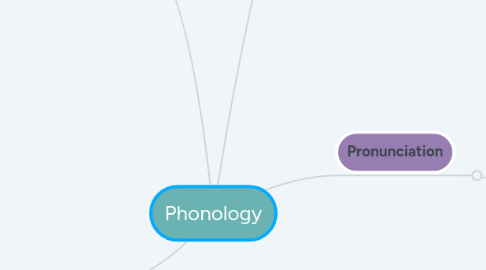
1. Historical background
1.1. The founder - the Russian scientist prof. Ivan Alexandrovitch Baudouin de Courtenay (1845 - 1929).
1.1.1. Many followers continued the work of I. A. Baudouin de Courtenay, such as N. S. Trubetskoy, some linguists of the Moscow school: R. I. Reformatsky, P. S. Kuznetsov and others. The most gifted pupil of Baudouin de Courtenay was prof. L. V. Shcherba (1880 - 1944).
1.1.2. He tried to analyze phonemes according to their functions through studying phoneme alternations and trying to explain this phenomenon.
1.1.3. It was only after 1928 when the first International Linguistic Congress took place that this phoneme theory became widely known and spread.
2. Allophones (typical and subsidiary)
2.1. subsidiary allophones (positional and combinatory)
2.1.1. Positional allophones are used in certain positions traditionally. For example, the English /l/ phoneme is always ‘dark’ in final position and before consonants as in ‘tell’, ‘ball’, ‘cold’, etc. the English /l/ phoneme is always ‘light’ in initial position as in ‘light’, ‘lesson’, ‘language’, etc.
2.1.2. Combinatory allophones are those which are influenced by the neighboring speech sounds. They are the result of assimilation, adaptation, accommodation , and of the specific process of sound transitions (VC, CV, CC, VV).
2.2. articulatory features
2.2.1. relevant (occlusive, forelingual, and voiceless-fortis)
2.2.2. irrelevant (rounded, unrounded; dental, alveolar, post-alveolar; plosive, plosionless; oral, nasal)
2.3. typical allophones
2.3.1. They are not influenced by neighboring speech sounds
2.3.2. For example, the typical allophone of the /t/ phoneme is characterized by the following features: occlusive plosive, forelingual alveolar, voiceless- fortis, oral.
3. Pronunciation
3.1. mistakes: phonemic and .allophonic (the more general terms are phonological and phonetic)
3.1.1. The substitution of one allophone of the phoneme for another allophone of the same phoneme produces an allophonic (or phonetic) mistake. For instance if the /k/ phoneme in the word "cake" is pronounced without aspiration, or /k/ in the word "fact" has a plosion, or the /k/ phoneme in "sky" is aspirated, communication takes place all the same (even though the words are not pronounced properly). Mistakes of this type violate the recognitive function, of the phoneme.
3.1.2. We speak of a phonemic (or phonological) mistake when an allophone of one phoneme is replaced by an allophone of an¬other phoneme, as in /glæd/ - /klæd/; /men/ - /mæn/; /set/ - /sed/; /kætʃ/ - /kæt/: etc. In this case the distinctive function of the phoneme is violated.
4. Phoneme
4.1. The smallest language unit that exists in the speech of all the members of a given language community as such speech sounds which are capable of distinguishing one word form from another word of the same language or one grammatical form of a word from another grammatical form of the same word.
4.2. The number of phonemes in each language is much smaller than the its number of allophones. It means that each phoneme has several allophones.
4.3. Functions (constitutive, distinctive, and recognitive)
4.3.1. The constitutive function manifests itself in the fact that phonemes constitute words and sentences. All morphemes, syllables, words, sentences, phrases, and utterances consist of phonemes. They cannot exist outside phonemes.
4.3.2. The most important is the distinctive function of the phoneme, which is reflected in its definition «Phonemes are capable of differentiating one morpheme from another morpheme, one word from another word (consequently one syllable, one phrase, one sentence from another syllable, another phrase, another sentence).
4.3.2.1. morpheme-distinctive function; e.g, /s/ - /t/ morphemes denoting the third person singular of verbs, /z/ - /d/ and the past tense of verbs, as in: /α: sks/ - /α: skt/; /begz/ - /begd/; /ә/ - /i/ one morpheme denoting the doer of the action, and one adjective-forming morpheme, as in: /’sli:p ә /.- ./'sli:pi/; / 'dri:m ә / - / 'dri:mi/;
4.3.2.2. word-distinctive function, e.g, / 'mi:t ә/ - /'mæt ә/ (meter - matter); /du:/ - /'du:ә/ (do - doer); /'klouvә/ - /'klevә/ (clover - clever); /hænd/ - /bænd/ . (hand - band); /pi:k/ - /spi:k/ (peak - speak); /su:p/ - /su:ð/ (soup - soothe); etc.
4.3.2.3. form-distinctive function, e,g. /ri:d/ - /ri:dz/ (read - reads); /rait/ - /rout/ (write - wrote); /wз:d/ - /wз:dz/ (word - words); /leit/'~ /'leitә/ (late - later); etc,
4.3.2.4. sentence-distinctive function, e.g, /ðei wә rait/ - /ðei wә tait/ (They were right.-They were tight,) /wi 'tuk ә pæn/ - /wi 'tuk ә pin/ (We took a pan.- We took a pin.) /it wәz sould/ - /it wәs tould/ (It waa sold. - It. was told.), etc.
4.3.3. The recognitive function of the phoneme consists in making words, phrases and sentences recognizable. Words, phrases and sentences are easily understood when the proper allophones are used in the right places.
4.3.3.1. In, the word "quite", for instance, the /k/ phoneme must be rounded, in the word "cool" /k/ should be strongly aspirated whereas in the word "skate" /k/ is hardly aspirated at all , the /k/ phoneme of "looked" is plosionless, etc.
4.3.3.2. The violation of the recognitive function results in the following: (1) such pronunciation bears a strong foreign accent, (2) it produces a comic impression upon the listener, and (3) it hampers the process of communication.
